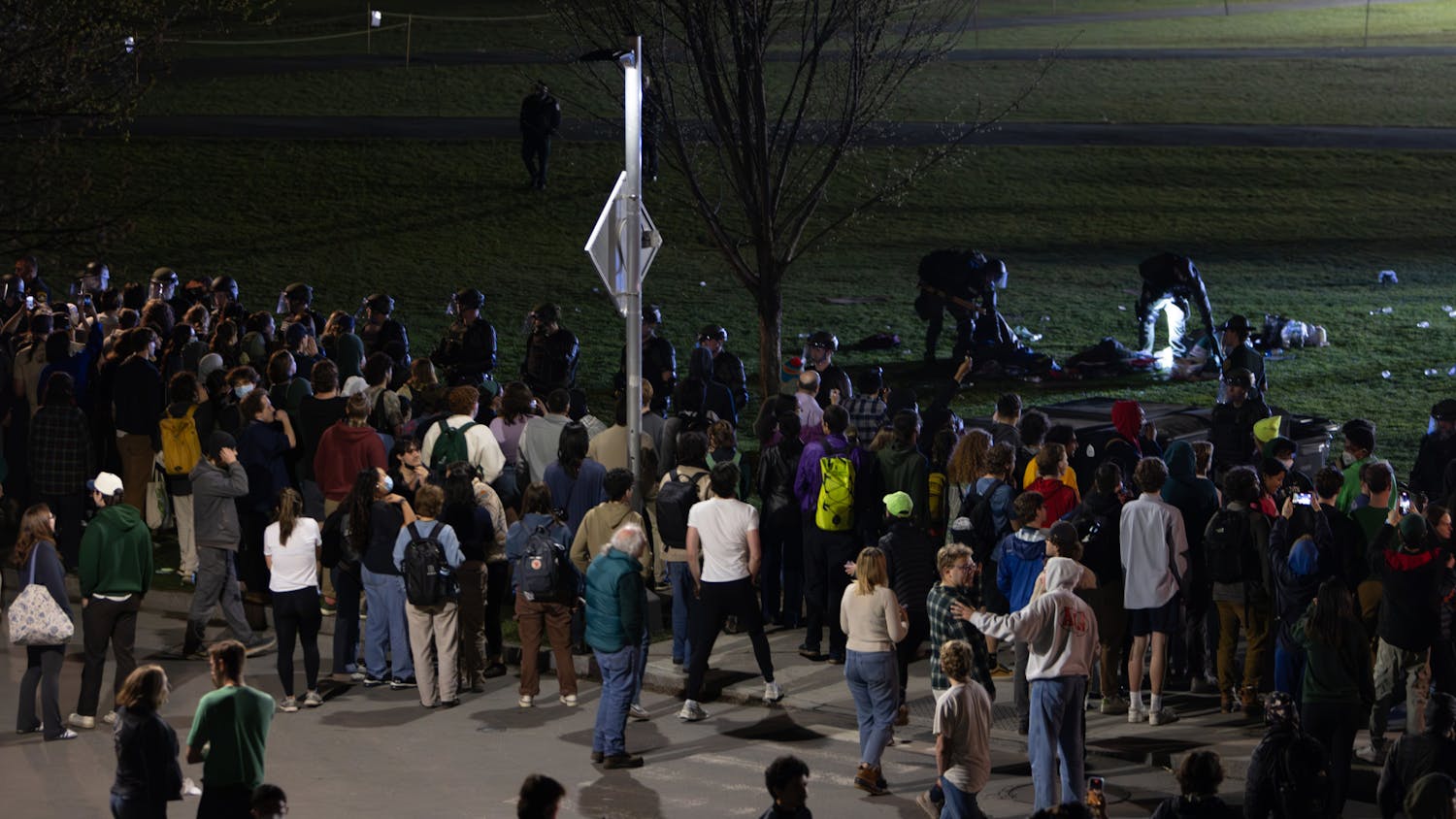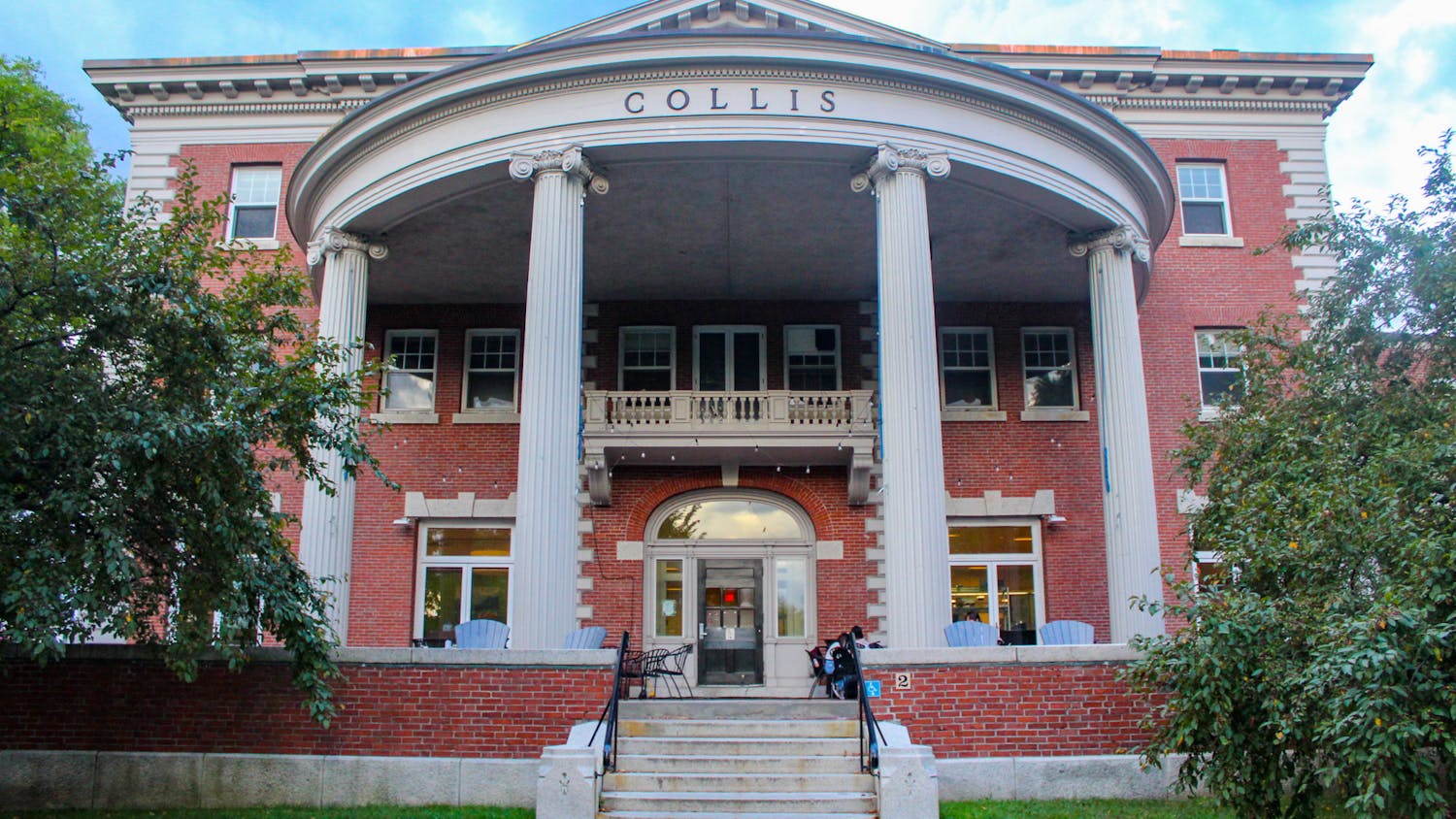Dean of the College Charlotte Johnson’s departure this June marks the latest in a series of high-level administrative changes at the College. One year after College President Phil Hanlon took office in 2013, six senior positions in his administration will have changed leadership. Since former College President Jim Yong Kim started his tenure in 2009, the senior administration has seen significant structural changes and 18 of 24 high-level positions transition leadership, some as frequently as three times.
Only six senior administrative positions — the deans of the Tuck School of Business and the Thayer School of Engineering, vice president and chief information officer, dean of the libraries, the general counsel and the dean of admissions and financial aid — have not seen changes in leadership since 2009. Tuck dean Paul Danos will step down in June.
In the past five years, the College has seen two presidential administrations, as well as one year of Carol Folt’s interim presidency.
In June, when Carolyn Dever joins the College as provost, she will be the fourth person to fill that role since 2009. The provost position, which involves working with academic deans to support and advance scholarship across the College and its graduate schools and help oversee academic budgeting, saw the most turnover in the past six years.
In an effort to “introduce a more integrated senior management structure,” Kim wrote in a letter to College employees in 2010, he made several structural changes to the administration, creating two new senior positions, chief of staff and senior vice president for advancement, and modifying the executive vice president and chief financial officer role. The only chief of staff has been David Spalding, and the position is currently vacant, while there have been three senior vice presidents for advancement since that position’s creation.
New York Times education reporter Richard Pérez-Peña said he believes the level of administrative turnover at the College is unusual compared to general trends in higher education.
Between July 2012 and September 2013, a little over half of Brown University’s senior administrative positions, including provost and dean of the college, switched leadership. In July 2012, Christina Paxson replaced Ruth Simmons as the university’s president.
Stephen Nelson, a higher education expert and a senior scholar at Brown’s Leadership Alliance, said presidential transitions can bring windows of high levels of administrative turnover. He said that it is rare for the entire core group of senior administrators to leave or change positions.
“Some people argue that every senior administrator will let the president know that they would produce their resignation if they would like it,” Nelson said. “Other people don’t go as far to say that it is needed.”
High turnover following an outgoing presdident who held the position for a long time is more common, Nelson said, as some administrators may wait for the president to step down to leave. He said administrators often continue working at the university in different roles.
James Wright has continued to teach history classes in the history department after stepping down as College President.
Nelson said Kim’s short tenure could be responsible for the high level of turnover that occurred when he left.
“Given the suddenness with which Kim left, anybody who knew anything knew that Dartmouth would go into an acting presidency, that there would be some lag between the time Kim left and the time when Hanlon would begin,” he said. “You have to learn to work with someone new, have to adjust to something new. Some people don’t want to experience that.”
Carol Schneider, president of the Association of American Colleges and Universities, said in an email that administrative movement may be due to various causes, like natural turnover cycles and a new president’s wish to create his or her own team.
English professor Ivy Schweitzer, who has been at the College since 1983, said she believes administrative turnover affects students more strongly than it does faculty, since faculty members tend to interact less frequently with administrators. She said that she thinks that the lack of continuity can negatively impact students.
“They have administrators who they trust and respect, and then they leave,” she said. “That turnover doesn’t give students continuity for their own activities and needs.”
Biology professor Lee Witters, who came to Dartmouth in 1984, said a lack of continuity, caused by turnover, can be a problem.
“Someone comes into Dartmouth new — chances are it’ll take at least a year to become acquainted with things and settle in,” Witters said. “So if they are here for only three years, it might not be the most productive that it could be.”
Turnover can make it difficult for faculty to establish strong working relationships with administrators, Witters said.
Dean of Admissions and Financial Aid Maria Laskaris, who has held her position since 2007, said that the admissions office has not faced any problems with continuity during turnover. She said that due to the department’s close relationship with the provost’s office, the transition between Kim and Folt was relatively easy.
She added that she and Hanlon began speaking about admissions and financial aid soon after his appointment, and that she has begun communicating with Dever.
“I think we have found ways to ensure continuity in spite of the transition,” she said. “I have felt well supported.”
Witters said that a benefit of administrative turnover is the potential for new ideas and ways of thinking, especially if administrators bring experience from different schools.
Nelson said new perspective in college administrations is important, which can happen through turnover.
“It’s always nice to open up the windows and get fresh air,” he said. “If there’s a number of people who have been around the barn for a while at an institution where they are maybe ossifying, it can be a positive thing for the institution to bring in new blood, even in just one position.”




